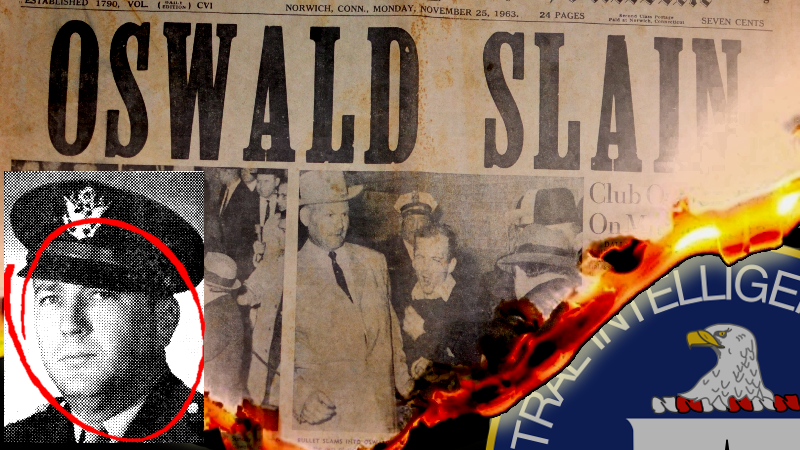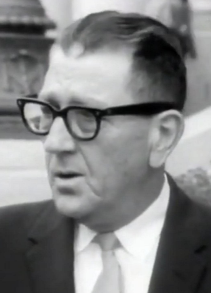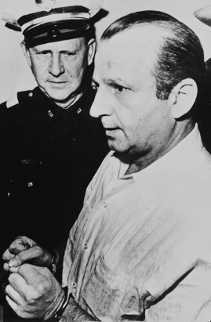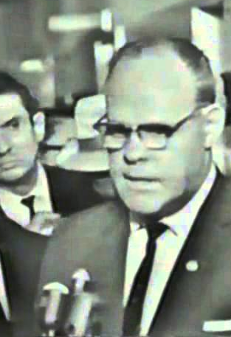
A PROMINENT CIA ASSET was instrumental in facilitating the 1963 murder of Lee Harvey Oswald, John F. Kennedy's purported assassin.
Earle Cabell (1906-1975) was the Mayor of Dallas at the time of the Kennedy assassination. He disrupted the Dallas Police Department's chain of command at a crucial moment in Oswald's custody. In the ensuing confusion, Jack Ruby was able to get close enough to Oswald to shoot him fatally.

Earle Cabell (pictured right) became a CIA asset in 1956. He was the younger brother of Charles Cabell, who had been deputy director of the CIA from 1953 until President Kennedy forced him to resign in 1962.
Many theories have been advanced about possible Dallas Police Department (DPD) involvement in the murder of Lee Oswald. One particularly sore point is the idea that DPD was the driving force behind Oswald's death. The way in which Jack Ruby was able to gain entrance to a controlled area in the basement of Dallas City Hall has never been satisfactorily resolved.
Dallas law enforcement were certainly not above committing major security breaches for the sake of outsiders. On repeated occasions, and to the frustration of other Dallas attorneys, celebrated Dallas attorney Charles W. Tessmer was able to gain access to prisoners held strictly incommunicado. The secret to Tessmer's seeming ability to pass through locked doors was that in the 1940s, Dallas Sheriff Bill Decker (1898-1970) had invited him to join the Freemasons.

(Later, Sheriff Decker warned Charles Tessmer away from the idea of representing Ruby, saying: "There may be a conspiracy... Those are dangerous people." Decker was not naive about conspiratorial danger: He had joined DPD in 1923, while infiltration by the Ku Klux Klan was at its peak, as discussed in a previous post.)
On Sunday November 24, 1963, having received menacing phone calls about a possible attempt to attack the city jail and lynch Oswald, DPD attempted to move Oswald to the more secure county jail. It was while Oswald was being escorted to a waiting vehicle in the city hall basement that Jack Ruby struck, bringing long-lasting shame upon DPD's already-tarnished reputation.
Unlike Charles Tessmer, Jack Ruby (pictured above right) was not a Freemason, but he was certainly friendly with many police officers. Even if no police officer saw Ruby enter the basement, which is itself extremely unlikely, they would have known he wasn't meant to be there the moment they spotted him.
The man who carried the can for the whole disaster was DPD Chief Jesse Curry (1913-1980). When Curry appeared before the Warren Commission in 1964, commission attorney Lee Rankin started to ask him to describe what had happened in the basement, then backtracked a step or two and asked instead: "Were you down there at the time?" Chief Curry (pictured below right) replied:

“No, sir; I would have been but I received a call from my mayor and as I was fixing to go downstairs and I wish that I had been downstairs because I don't know that I could have done anything but you always have this feeling if you were there maybe you could have done something.
"But I was called to the telephone and while I was talking to the mayor, why I heard some noises from downstairs and I was up on the third floor, and I heard some shouting, and someone came in and told me that Oswald had been shot."
Curry's recollection was supported somewhat by his deputy, Captain J. W. Fritz. Fritz told the Commission that immediately before the transfer was about to begin, Curry had left the office, saying that he would instead meet Captain Fritz at the County Jail after the transfer had been completed. Secret Service agent Forrest V. Sorrels had been present in the office, and he also remembered Curry leaving the office.

Dallas Mayor Earle Cabell (pictured during his wartime service as a US Army Major, left) remembered it very differently indeed. He told the Warren Commission that he had received a call from Chief Curry, just before Oswald was shot, and that the two of them discussed the permit for a scheduled public parade.
As soon as he had got off the phone to Curry (Cabell claimed), another call arrived from a friend who said: "Do you have your television on?"
"And I said, "No." She said, "Get it on quick. They have just shot Oswald." And I immediately turned my television on. I was in the den where I was sitting and taking these telephone calls, and then just as I get it turned on, they still had not removed Oswald at that time because this was just a matter of a minute or 2 from the actual shooting. Then Chief Curry called and said, "They have just shot Oswald." And I said, "Yes; I have it on TV now."

Either Cabell or Curry was lying, and it's not difficult to figure out who. The transfer of Lee Harvey Oswald (whose mugshot is pictured, left) was being broadcast live on network television during a national crisis. Dallas City Hall was already standing room only, as reporters from all over the world shouted and jostled. Reporters kept trying to siphon off City Hall's mains electricity illegally, causing repeated blown fuses, and temporary blackouts. Officers complained about being blinded by huge spotlights erected in the gloomy basement by TV camera crews.
The proposition that the DPD Chief somehow forgot to oversee the jail transfer he had planned, but instead phoned the Mayor (for a chat about a public event permit) is so incomprehensible that it borders on the insane.
Chief Curry had told the truth: Cabell had called Curry at the moment the jail transfer was meant to begin, and he pointlessly kept Curry on the phone for several minutes with irrelevant questions about the progress of DPD's investigation into the assassination. When Curry finally got away from the call, the transfer had been attempted without him, so it had inevitably descended into chaos, and Oswald was already bleeding to death.
DPD Detective James Ramsay was present during the attempted transfer, and decades later he still remembered the confusion that reigned in the basement, as the chain of command disintegrated around him:
"The command people were countermanding one order after another. One chief would give an order, then minutes later you would get a different order from someone else. You just did what the last chief told you to do."
As for Chief Curry himself, his first reaction when he heard the news that Oswald had been shot was not to pick up the phone and call CIA asset Earle Cabell. Jesse Curry, 50 years old and a lawman for 27 of those years, broke down and wept.
⦿ All Rights Reserved
Congratulations @garrickalder! You have completed the following achievement on the Hive blockchain and have been rewarded with new badge(s) :
Your next target is to reach 40 posts.
You can view your badges on your board and compare yourself to others in the Ranking
If you no longer want to receive notifications, reply to this comment with the word
STOPTo support your work, I also upvoted your post!
Check out the last post from @hivebuzz: